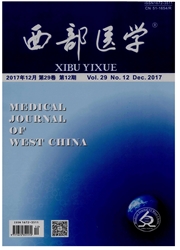

 中文摘要:
中文摘要:
目的了解地震地区灾后6年基层医院急诊科建设及急救护理能力的现状以及存在的问题,为区域急诊质量控制分中心开展工作提供依据。方法采用多种抽样调查方法,选取某地震地区二级以上综合医院急诊科护士进行问卷调查,向19家基层医院发放护理管理调查表19份,急诊科护士调查表567份。结果19家基层医院急诊科(室)建立率为100%,急救车及急救设备配备率为100%,急诊质量控制体系建设、急诊患者安全管理、医院灾害急救应急机制建设、多发创伤救护、创伤量化评分法、批量伤员检伤分类、团队抢救配合以及灾害现场救护、自我防护等个别项目知晓率得分较低,影响知晓率的主要因素包括医院级别、医院管理水平、员工培训、医护人员的学历、工龄等。结论灾后重建基层医院硬件建设已达标,但急诊护理质量管理水平及护理人员对灾害等急救事件的应对知识掌握较欠缺,急救能力有待提高,需加强对基层医院急诊管理人员和基层急诊护士的相关知识培训,提高紧急救援能力。
 英文摘要:
英文摘要:
Objective To realize the current situations and existing problems in post-disaster rebuilding primary hospitals after the earthquake disaster {or six years and investigate the construction of the emergency departments and provides the basis for the work of regional emergency medicine qualities control. Methods A serials of data from the questionnaire survey about emergency nurses of secondary hospitals and tertiary hospitals in the earthquake area were an- alyzed. Results The rates of knowledge about first aid were related to the hospital level, job seniority, frequency of train- ing. Conclusion The outfitting of rescue facilities has been up to the standard in the post-disaster reconstruction primary hospitals. The first aid knowledge needs to be taught by training, and the first aid ability needs to be improved.
 同期刊论文项目
同期刊论文项目
 同项目期刊论文
同项目期刊论文
 期刊信息
期刊信息
